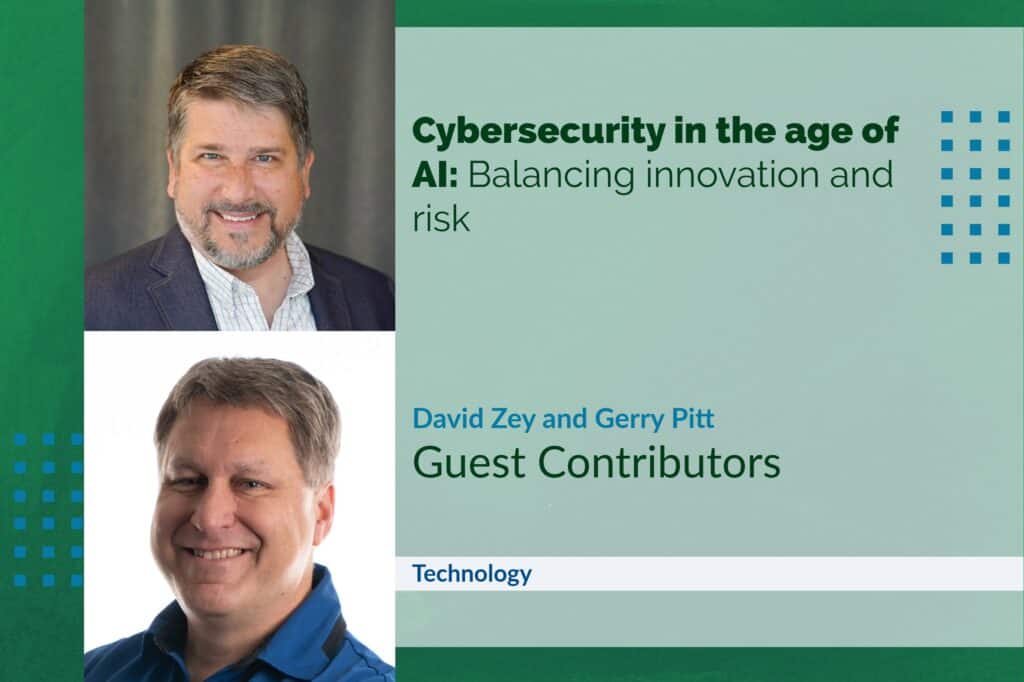
November 17, 2025
It’s no secret that artificial intelligence (AI) is reshaping how companies operate, make decisions and defend themselves against cyber threats.
From generative AI tools that accelerate software development to intelligent systems that scan billions of security signals daily, the technology promises enormous efficiency gains.
And as adoption surges, so does concern over how secure these systems really are.
The same algorithms that empower defenders can also open new pathways for attackers and, much like history’s great innovations, confidence can sometimes outpace caution.
Every technological leap has had its Titanic moment.
A point where progress raced ahead of preparedness.
AI isn’t the iceberg, but it’s teaching organizations the same lesson shipbuilders learned a century ago: when speed meets complexity, governance becomes the difference between smooth sailing and disaster recovery.
The acceleration of AI and the governance gap
For many chief information security officers (CISOs), AI adoption has become both an opportunity and a minefield.
Security leaders, once dismissed as the “Department of No,” are now sought-after advisers as executives deploy generative AI.
The message is clear: security must accelerate, not obstruct, innovation.
The speed of this transformation is remarkable.
Some major enterprises report adopting AI tools faster than they moved to the cloud a decade ago.
But that haste brings risk.
According to the National Cybersecurity Alliance, 65% of employees have used AI platforms, yet more than half have received no security or privacy training, and 43% admit to sharing confidential business data with AI systems.
The result is a growing shadow-AI problem where unsanctioned tools expose corporate data to unseen vulnerabilities.
Many large enterprises are responding by forming cross-functional AI councils that include CISOs, CIOs and business leaders.
At one global manufacturer, the council’s discussions often circle back to cybersecurity: how data is managed, who can access it and how to minimize exposure.
This collaborative model, still rare in many organizations, will be important as AI systems become more deeply woven into operations.
That tension (innovation moving faster than oversight) isn’t a failure – it’s just what progress looks like before discipline catches up.
When innovation outpaces governance-in-context
AI governance today is being tested in real time.
Companies are moving faster than their frameworks can adapt, and even well-intentioned oversight often lags behind the pace of experimentation.
It’s not that leaders dismiss governance – it’s that innovation now operates in contexts that existing models weren’t built to handle.
History reminds us this pattern isn’t new.
The Titanic, hailed as the pinnacle of engineering, was launched with the same conviction that process and design were sufficient.
Yet when tested by new conditions, its safeguards proved incomplete, and its confidence outpaced its caution.
The Titanic’s story wasn’t one of neglect but of misplaced certainty.
Its designers had the best materials, skilled workers and advanced technology for their era.
What they lacked was context.
The understanding of how the system would behave in real-world conditions and how quickly small oversights could cascade into catastrophe.
The ship’s builders optimized for speed and prestige, assuming that safety was a solved problem.
Governance, though present on paper, wasn’t integrated into decisions made on the deck.
Many organizations find themselves in a similar position with AI.
The technology is extraordinary, but the environments it enters are unpredictable.
Governance and security models that worked for cloud adoption or data privacy a decade ago now struggle to anticipate the risks unique to generative and autonomous systems.
AI introduces dynamic feedback loops, opaque decision paths and dependencies that stretch beyond any single department.
The real test of leadership isn’t technical competence but the willingness to pause and ask whether the controls in place still fit the waters being navigated.
That’s where the old lessons regain their relevance.
The Titanic’s legacy isn’t just a warning – it’s a reminder that innovation and governance must mature together.
Building AI systems responsibly requires humility about what we don’t yet know, rigorous validation of assumptions and constant situational awareness.
Like shipbuilders who eventually redesigned lifeboat protocols and radio procedures, modern leaders must evolve their oversight structures before the next crisis forces the issue.
In cybersecurity, as in shipbuilding, resilience begins not with the strength of the hull but with the discipline of those steering the course.
New attack surfaces, old lessons
If the Titanic taught us humility, the 2025 AI threat landscape is teaching us pattern recognition.
Among the most dangerous, according to SentinelOne’s analysis, are data poisoning attacks that corrupt training sets, model inversion exploits that reveal sensitive data and adversarial examples that subtly manipulate AI inputs to evade detection.
Attackers can even steal proprietary models through repeated queries or embed hidden backdoors that activate under specific triggers.
AI systems also enable more convincing digital deception.
Generative AI can craft persuasive phishing emails, synthetic voices or deepfake videos with tools that supercharge social engineering.
Meanwhile, vulnerabilities in APIs and specialized AI hardware expand the attack surface beyond software.
These threats underline a key truth: every IT (and AI) system, no matter how advanced, is only as secure as the data, infrastructure and human oversight surrounding it.
What security professionals are saying
A 2024 global survey of more than 1,000 cybersecurity professionals by CrowdStrike paints a nuanced picture of AI’s promise and peril.
Eighty percent of respondents said they prefer AI capabilities delivered through integrated security platforms rather than one-off tools.
This signals a move toward controlled ecosystems over fragmented experimentation. Seventy-six percent want AI that is purpose-built for cybersecurity, not generic large language models repurposed for threat detection.
Perhaps surprisingly, most experts see AI as an enhancer, not a job-killer.
They expect generative AI to relieve burnout, speed investigations and amplify human judgment.
Economic concerns center not on cost but on ROI and proving that AI delivers measurable gains in detection speed, accuracy and reduced incident volume.
Yet safety and privacy remain top of mind: nearly nine in 10 organizations have implemented or are developing guardrails to govern AI use.
Their top worries include sensitive data exposure, adversarial attacks on AI tools and the lack of public policy standards to regulate AI behavior.
Building secure and responsible AI
Managing AI risk requires both technical rigor and cultural change.
On the technical side, organizations can harden systems through:
- Data validation and anomaly detection to prevent poisoning or bias
- Differential privacy and encryption to safeguard model integrity
- Adversarial testing and red-teaming to identify weaknesses before attackers do
- Continuous monitoring and patching across AI pipelines, APIs and dependencies
Equally critical are governance and ethics.
Companies need transparent AI policies, clear accountability and regular training for developers and employees.
Responsible AI adoption means understanding not just what the technology can do, but what it should do and who bears responsibility when it fails.
As one industry consensus increasingly shows, deploying AI safely isn’t an IT initiative.
It requires the same sponsorship, attention and discipline as any program tied to a company’s reputation.
The path forward
AI will continue to redefine cybersecurity itself.
Security operations centers are already using agentic AI to filter billions of system signals and automate much of the initial triage.
But the same capabilities can be exploited by adversaries armed with generative tools of their own.
The arms race is now algorithmic.
To stay ahead, organizations should treat AI governance as an enterprise-wide discipline, not an afterthought for the IT department.
The most resilient companies will combine platform-based AI with disciplined oversight, measurable ROI tracking and a culture that prizes both speed and security.
The future of AI in business will hinge on trust.
Those who secure their systems and the data that powers them will not only help prevent breaches but also earn the confidence of customers, regulators and employees alike.
In the race to innovate with AI, cybersecurity isn’t the brake – it’s the steering wheel with leadership’s hands squarely on it.
 Cedar Lake Speedway: Home of ‘old-fashioned fun’
Cedar Lake Speedway: Home of ‘old-fashioned fun’ Voyageurs Bakehouse expands into new downtown Green Bay space
Voyageurs Bakehouse expands into new downtown Green Bay space







